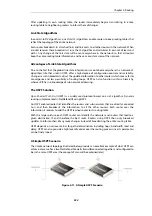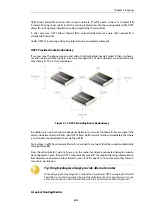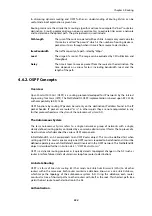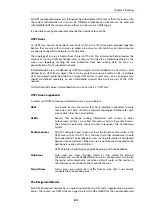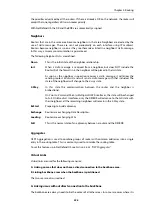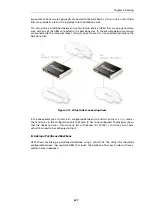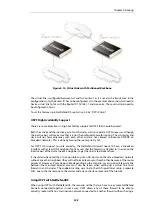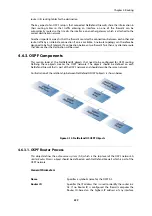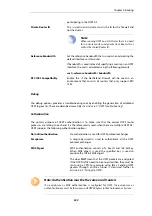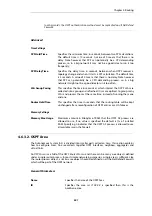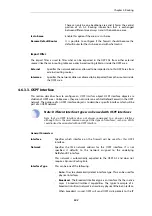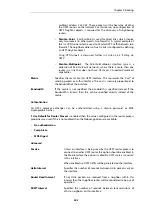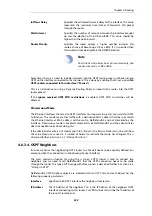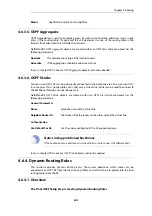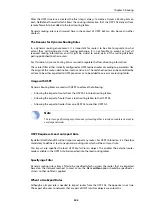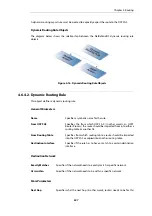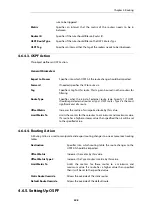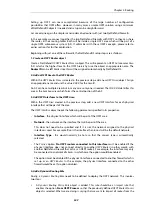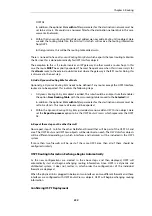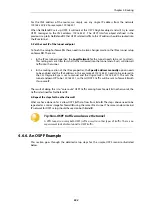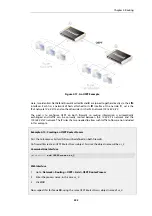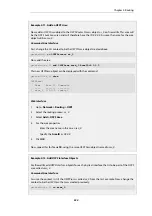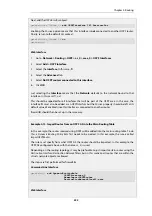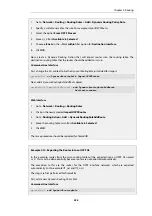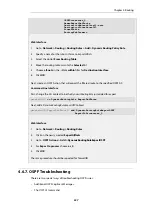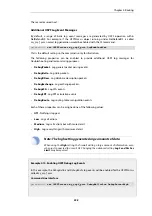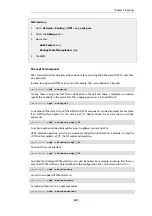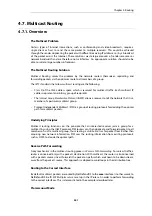
After the OSPF structure is created, the final step is always to create a
Dynamic Routing Rule
on
each NetDefend Firewall which allows the routing information that the OSPF AS delivers from
remote firewalls to be added to the local routing tables.
Dynamic routing rules are discussed here in the context of OSPF, but can also be used in other
contexts.
The Reasons for Dynamic Routing Rules
In a dynamic routing environment, it is important for routers to be able to regulate to what
extent they will participate in the routing exchange. It is not feasible to accept or trust all
received routing information, and it might be crucial to avoid parts of the routing database
getting published to other routers.
For this reason,
Dynamic Routing Rules
are used to regulate the flow of routing information.
These rules filter either statically configured or OSPF learned routes according to parameters like
the origin of the routes, destination, metric and so on. The matched routes can be controlled by
actions to be either exported to OSPF processes or to be added to one or more routing tables.
Usage with OSPF
Dynamic Routing Rules are used with OSPF to achieve the following:
•
Allowing the import of routes from the OSPF AS into local routing tables.
•
Allowing the export of routes from a local routing tables to the OSPF AS.
•
Allowing the export of routes from one OSPF AS to another OSPF AS.
Note
The last usage of joining asynchronous systems together is rarely encountered except in
very large networks.
OSPF Requires at Least an Import Rule
By default, NetDefendOS will not import or export any routes. For OSPF to function, it is therefore
mandatory to define at least one dynamic routing rule which will be an
Import
rule.
This
Import
rule specifies the local
OSPF Router Process
object. This enables the external routes
made available in the OSPF AS to be imported into the local routing tables.
Specifying a Filter
Dynamic routing rules allow a filter to be specified which narrows the routes that are imported
based on the network reached. In most cases, the Or is within option should be specified as
all-nets
so that no filter is applied.
When to Use Export Rules
Although an
Import
rule is needed to import routes from the OSPF AS, the opposite is not true.
The export of routes to networks that are part of
OSPF Interface
objects are automatic.
Chapter 4: Routing
346
Summary of Contents for NetDefendOS
Page 30: ...Figure 1 3 Packet Flow Schematic Part III Chapter 1 NetDefendOS Overview 30 ...
Page 32: ...Chapter 1 NetDefendOS Overview 32 ...
Page 144: ...Chapter 2 Management and Maintenance 144 ...
Page 284: ...Chapter 3 Fundamentals 284 ...
Page 392: ...Chapter 4 Routing 392 ...
Page 419: ... Host 2001 DB8 1 MAC 00 90 12 13 14 15 5 Click OK Chapter 5 DHCP Services 419 ...
Page 420: ...Chapter 5 DHCP Services 420 ...
Page 573: ...Chapter 6 Security Mechanisms 573 ...
Page 607: ...Chapter 7 Address Translation 607 ...
Page 666: ...Chapter 8 User Authentication 666 ...
Page 775: ...Chapter 9 VPN 775 ...
Page 819: ...Chapter 10 Traffic Management 819 ...
Page 842: ...Chapter 11 High Availability 842 ...
Page 866: ...Default Enabled Chapter 13 Advanced Settings 866 ...
Page 879: ...Chapter 13 Advanced Settings 879 ...

